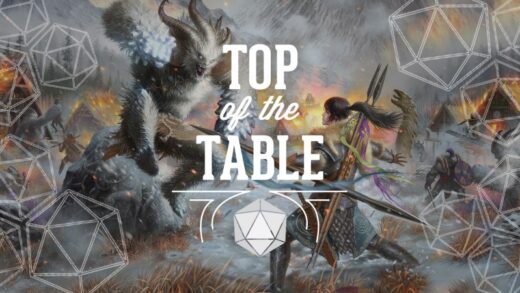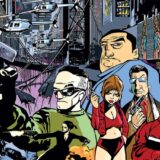Ed Boon Talks 30 Years Of Mortal Kombat
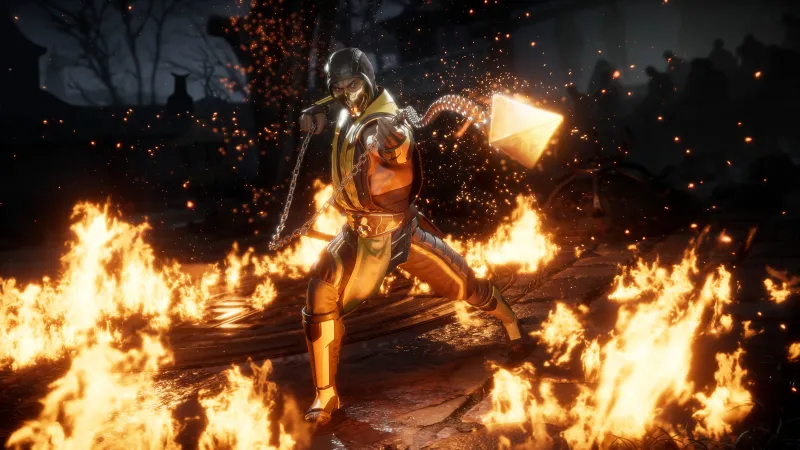
In the early ’90s, the fighting game genre was a far cry from what it is today. Inspired by series like Final Fight, Kung-Fu Master, and Karate Champ, the fighting genre emerged in arcades, buoyed by a few significant players in the space. One of those franchises was Mortal Kombat, a bloody, gory fighting game that took concepts from other fighting games and dialed them to 11. The series became notorious for its spine-ripping, heart-grabbing, limb-chopping action, but beneath the controversies and the hearings was a technically sound, capable fighting game.
The Mortal Kombat franchise has continued to grow and evolve, showcasing massive staying power in a sometimes ruthless industry. Now, 30 years into the series’ existence, Mortal Kombat has proven it’s here to stay as one of the preeminent players in the fighting game space. We caught up with series co-creator Ed Boon to talk about the series’ bloody roots, its fascinating evolution, and its current status as one of the industry’s heavy hitters.
Before we jump into Mortal Kombat, can you describe how you viewed the fighting game genre and arcade culture as it existed in the ’80s and early ’90s?
Street Fighter II really invigorated things, and that was a big inspiration for us in doing Mortal Kombat; we wanted to make a more gritty, bad-boy version of Street Fighter. And before that was Karate Champ, but that was a number of years before that. To me, the fighting game genre wasn’t even a genre, really. It’s not like there was a bunch of games in that category! It was really scattered; every once in a while, one would exist. Street Fighter blew that door open. Mortal Kombat broke the next door open. Between those two games, it suddenly became [a genre] because everybody wanted to get a piece of that. It became a genre based on Mortal Kombat and, before that, Street Fighter’s success.
And when you were talking about getting in on that genre that was, as you pointed out, nascent, what were the original inspirations and concepts you wanted to touch on with that first Mortal Kombat?
At the end of the day, I think you could think of it as it was four guys in their 20s, completely inspired by action movies of the ’70s, ’80s, and ’90s, and just mashing up all of those ideas and “Wouldn’t it be cool” moments into a fighting game, let loose and basically allowed to do what they wanted to do. You know, four guys in their 20s making a game, and nobody’s telling them what to do. That’s the result of what Mortal Kombat is.
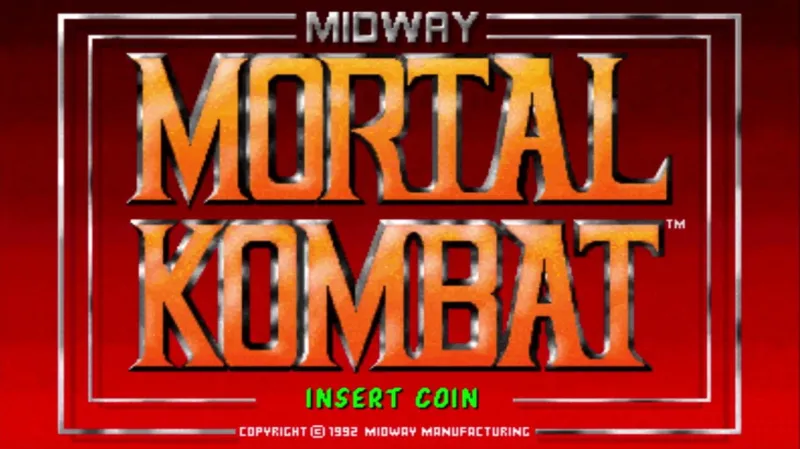
Obviously, the blood and brutality were very big parts of that formula, but the graphics were also a very underrated part of that equation when people look back at the legacy of Mortal Kombat. Seeing digitized versions of real people was something that you didn’t see a whole lot in gaming at the time.
Yeah, some people forget that the company that we made Mortal Kombat for, Midway Games, had kind of pioneered it. Atari had Pit Fighter before us and a couple of games, but Midway was the first company that was banking everything on digitized graphics. It’s that photorealism that suddenly there’s a person on screen. It’s not a sprite that somebody drew; that’s a person!
I think that really broke through a new barrier of attachment to the characters. Suddenly, you’re seeing an actor doing something; it’s not somebody just drawing something really well. I think that was big, and Mortal Kombat was kind of like the culmination of all that. There are a number of games that did well before it, but Mortal Kombat was the sweet spot: big characters, realistic looking, the introduction in some ways to the gore. You know, Narc had gore and a number of other games, but Mortal Kombat was such a mass market. It had such a reach that I think, in some ways, it got credit for doing stuff that Midway was already doing. But it was really the culmination of that technology with Mortal Kombat.
Do you think having those characters look so realistic on screen and then having terrible things happen to them was why the game courted so much controversy?
Probably. I think, again, the photorealism of the graphics was something that was in itself stunning people, and then you add on to that, “He cut his head off? Can you do that?” And we would ask ourselves that. “Can we do that?” There was nobody saying “no” at the time, so we did. I just go back to “imagine making a game with three of your friends and you’re all in your 20s and you’re just cut loose.
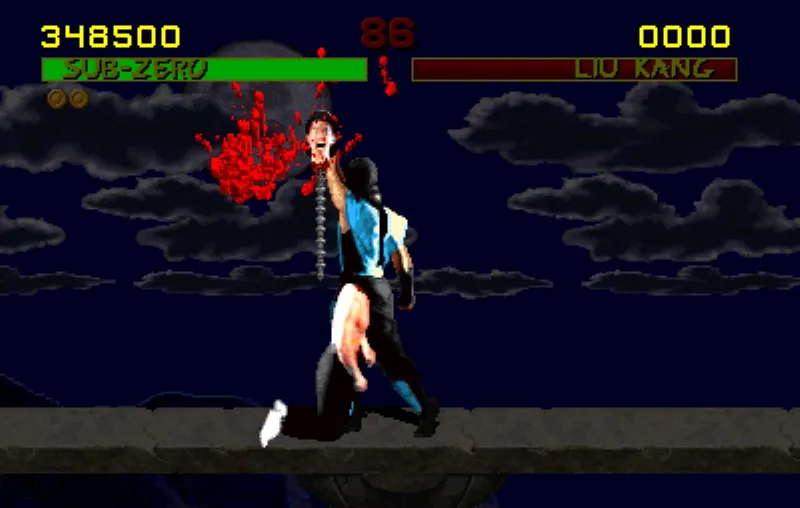
We’ve all done things in our 20s where we looked back and thought, “Alright, maybe I took that a little too far,” and maybe you suffer a consequence from it. But you guys were in your 20s creating this video game, and then suddenly, you have politicians holding hearings about it. What did that period feel like for you? Were you worried you were going to be in trouble, or were you in a different headspace?
I remember at one point, they started talking about a rating system like movies have. I remember thinking to myself, “Yeah, that makes sense. I wouldn’t want a seven-year-old buying Mortal Kombat. They have a point.” To me, I don’t want to simplify it, but it was a natural progression of an emerging technology, right? You can do something more and more realistic with video games; they were approaching movies in terms of resolution and fidelity and all that stuff. So obviously, somebody’s going to explore it, like horror movies or action movies. It was inevitable. If Mortal Kombat didn’t come out, I guarantee some other game would have done it. The inevitable ratings board would have emerged.
One of the things that were the biggest lightning rods of these hearings was the Fatalities, which have long been a trademark of the franchise. I believe that you said at one point that it was inspired by the Street Fighter II stun mechanic where they just stood there, dazed, and you wanted to land a devastating blow at that moment. But something that’s always struck me is that you put out these games, but you didn’t release the inputs needed to do these Fatalities. You wanted everybody to discover them on their own. Was there any fear that maybe people would never find them?
Yeah, and that fear went away in like a day. [Laughs] I remember putting in Sonya’s Fatality, and it was something ridiculous with the block button. I remember thinking, “If nobody gets it, maybe I’ll go do it in an arcade and tell one person and let it spread.” And when we put the game on test with Sonya, it was like a day or two before somebody found it. Because once players figured out that there were hidden things when it would say “Finish Them!” they would just rattle the buttons and the joystick, and something would come out, and everybody would lose their mind, and they would remember a part of it. When you have so many players playing the game, inevitably, it does come out, so we weren’t concerned at all when we saw how fast they picked up on the other Fatalities.
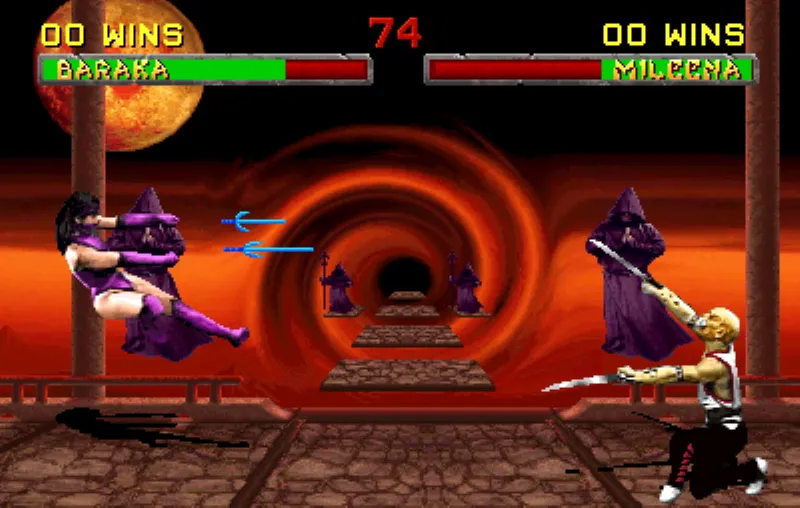
It really did become this detective situation where it’s like, “Alright, the Fatalities are a secret they didn’t tell us about… what else aren’t they telling us about?” I remember the rumor culture that existed around Mortal Kombat in the arcades in the ’90s with things like Reptile and other palette-swapped ninjas. Did you have any favorite rumors you remember hearing about your own game?
Animalities was a big one – you turn into an animal – to the point that we actually put it in the game. And the Reptile thing was something that I actually put in the game, and I didn’t tell anybody – not even the other guys on the team. The idea was to make it really rare, and hopefully, it’ll be something that is very hard to find, but enough people are talking bout it that there’s some validity to it. When it’s something like that, if it’s rare enough and it turns out to be true, somebody’s gonna make up something that’s completely fabricated.
And who knows? If Reptile was true, why couldn’t this thing be true? I would always describe Mortal Kombat as “There’s always a question mark over the game.” Have you found everything? That ended up being a significant part of Mortal Kombat’s identity: Mystery. Secrets. And players in arcades loved it. I remember when Mortal Kombat II came out, and people were figuring out [Fatalities], there was an arcade, and some guy had his friend standing with a shoebox, and when it was time to finish them, they would cover his friend’s hands and he would do the Fatality, just because he was the only one in the arcade who knew it. He was cool for a moment because nobody else could do that Fatality. [Laughs] That’s how ridiculous it got!
I think it would be a disservice to talk about the history of Mortal Kombat without highlighting just how important the characters are to the franchise’s success. Can you talk a little about how important this roster of characters has been over the years?
You’re absolutely right. A big chunk of Mortal Kombat is the characters and their identities. They have very basic costume designs, nothing complex. They all have different silhouettes: You look at Raiden, he has the hat. You look at the ninjas, they have the tight hood and all that. And then they have very unique, cool-looking things that they do. Combining “They really look cool,” “They have a really cool story behind them,” and “They do really cool things,” suddenly a cast of characters had greater importance than we would have even guessed.
We put the stories in Attract mode, hoping nobody would read them because everybody would be playing the game. It was just another layer of lore, backstory, and mystery, and players would fill in the rest in their heads. “Why is Sub-Zero mad at Scorpion?” “He probably did this!” It was such an amazing way that players attached to them like that.
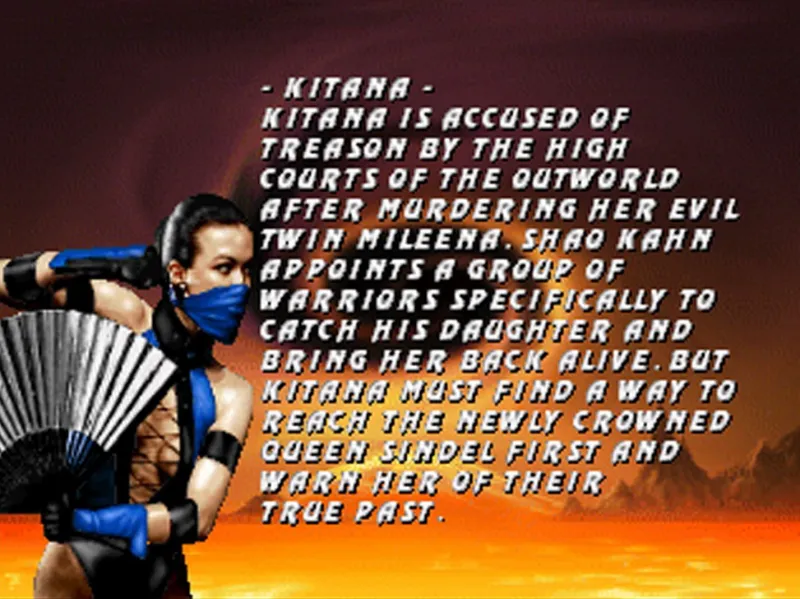
With Mortal Kombat’s rise in popularity, did you have a moment where you realized just how huge it was poised to become?
It was like four years later. I remember working on Mortal Kombat III and having the realization of “Wow, this thing is big!” We had II and I and there was a movie and all that stuff, and you know, our heads were so down working on the next title. When everybody was playing Mortal Kombat I and It was getting all the attention, we were working on II. When II was getting all the attention, we were working on III. We didn’t have a chance to breathe and take it all in. I remember it was, I think, after the movie, which was 1995, three years later, that it hit me like, “Wow, this thing’s pretty big!”
In the early 2000s, we started seeing a lot of fighting games gravitate towards the 3D style. Mortal Kombat was among the franchises that did that. How do you look back on MK’s 3D games today?
I look at Mortal Kombat in kind of like three chapters. There were the arcade games, the 3D games – Deadly Alliance, Deception, Armageddon – and then the more recent 9, 10, and 11. The 3D games, I thought that’s when we really started adding content that was just above and beyond the normal fighting game. Like, we had a puzzle game that was themed on Mortal Kombat. A Motor Kombat game – I actually remember going to Game Informer and showing Motor Kombat, and I think [former Game Informer editor Andrew] Reiner’s first words were, “What the hell is that?!”

I can actually hear that being said in Reiner’s voice right now.
[Laughs] Yeah. And so it was us just really having a lot of fun. Again, we had made a number of Mortal Kombat games, so we really wanted to start doing other things. And so, we put a chess game in Mortal Kombat. And so I thought [the 3D games] were a lot of fun. I thought they were a lot more accessible. It wasn’t like a really complex system; it was kind of the fighting styles and whatnot there. I was very happy with how they turned out, but at some point, it was clear that “Okay, we’ve done that. Let’s move on to something else” And that’s where the MK9s and MKXs came. We went back to 2D and kind of a little bit back to our roots.
Before we move back to the 2D roots part, I did want to talk about Armageddon a little bit. It served as an attempt at the ultimate 3D Mortal Kombat game, where it had all the characters, you could create your own Kombatant, and then the story was brought to a climax where it literally reset the universe. What was the team aiming for going into that entry? What did they think about the future of the franchise as that entry launched?
I think we were kind of in the mindset of, because that was Mortal Kombat 7 at that point, so we had told a number of Mortal Kombat stories. And each one we wanted to just be bigger and kind of one-upping the one beforehand. At some point, it became clear to us that it was time to do a reset or reboot. Since then, we’ve done it a couple more times – we did it with Mortal Kombat 9 and the end of Mortal Kombat 11. So, at some point, we thought it was inevitable that a resetting of things had to be done; you can’t just say, “And this person’s even strong than Onaga! And this person’s even stronger than Blaze!”
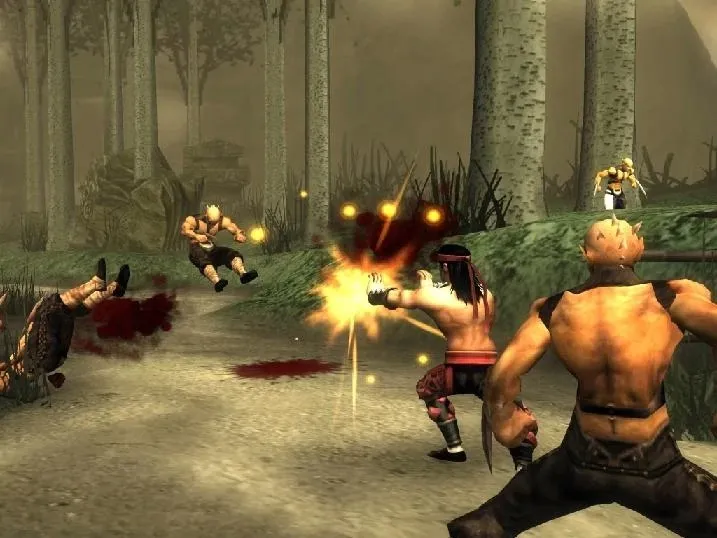
We’ve also received several spin-offs of the Mortal Kombat franchise. The most popular one to this day is probably Shaolin Monks, which came out around that time. How often do you hear people tell you how much they love Shaolin Monks and how much they would want a successor to that?
“Daily” is the first question. [Laughs] Many times, we’ve talked about doing either a sequel to the game, or a reboot of the game, or a remastering of the game. Shaolin Monks has really stood the test of time and has aged really well. We had actually started Mortal Kombat: Fire and Ice, the sequel with Scorpion and Sub-Zero, but the circumstances with Midway and all that were very difficult. It’s been on our minds. We’re so busy making Mortal Kombat and Injustice, and kind of alternating between those that we haven’t figured out quite a way to do it and not interrupt our normal production of games.
Speaking of Injustice, your first experience you had with DC characters came in Mortal Kombat vs. DC shortly after Armageddon, which was the final MK game you made under Midway. It was the final 3D entry of Mortal Kombat, but it also served seemingly as a launching point for your future work with the DC Universe.
It was. And it was also the first game that had our kind of unique story mode with the games where there’s this cinematic movie that plays and you have fights in the middle of it that you participate in; a number of people think that Mortal Kombat 9 was the first game that did that, but it was MK vs. DC that actually did it. MK vs. DC was fun in the standpoint of you can say, “Well, who would win in a fight: Scorpion or Batman or something,” but at the end of the day, we didn’t want to, you know, cut Batman’s head off or anything like that.
So we went with a T rating, and at the time – I don’t want to name names – but some of the people in charge of the approval of moves were hyper, hyper-restrictive. And so our Fatalities were very watered down. Even the regular special moves were very watered down. We were very much [restricted]. From my perspective, it really made it clear that there is room for a pure DC game and a pure Mortal Kombat game. So after that game was Mortal Kombat 9, or Mortal Kombat 2011. That was Mortal Kombat going back to being Mortal Kombat. And then we knew we were going to follow it up with a supercharged DC-only fighting game and that became Injustice.

Just prior to those games, Midway did close down, and you went off and founded NetherRealm with WB. Can you talk a little bit about what that transition was like for you as you begin work on a new Mortal Kombat game as a new company?
Midway was kind of dissolving in front of us. Our team was very much intact, and unfortunately, we saw a number of other teams dissolve, and people leave – and a number of them left and have been very successful and still are successful doing games, which is nice to see. But we really made a point that we wanted to keep our team intact.
We didn’t want to split up or anything like that. So when Warner Bros. came and was talking to us – we talked to a number of publishers – Warner Bros. was the first one who, the first thing they said to me was, “We want to give you six more months to finish the game.” We were supposed to be done in a couple of months, and they said, “No, we want to give you six more months. We want this one to be big,” and that made all the difference in the world. That kind of started our 12-year run with them that was alternating Mortal Kombat, Injustice, Mortal Kombat, Injustice, Mortal Kombat. We really found a good home for our team.
And the resulting game was Mortal Kombat 9. It seemed like that just as Street Fighter II and Mortal Kombat ushered in the start of the fighting genre as a whole, it’s almost like Street Fighter IV and Mortal Kombat 9 ushered in this new 2D renaissance. Did you feel that way in the moment, or is it only now, looking back, that you see that?
Interestingly, we had decided during MK vs. DC that the next Mortal Kombat game was going to be back to a 2D fighting plane, and this is before Street Fighter IV was announced. So we had already known that. We saw Street Fighter IV come out, and for us, it just confirmed our instinct or our suspicion that this is the way to go. Street Fighter IV was great and it did well, and so that really just energized us like, “Yeah, this is the way to go” with going back to a 2D fighting plane, but the graphics were still 3D.
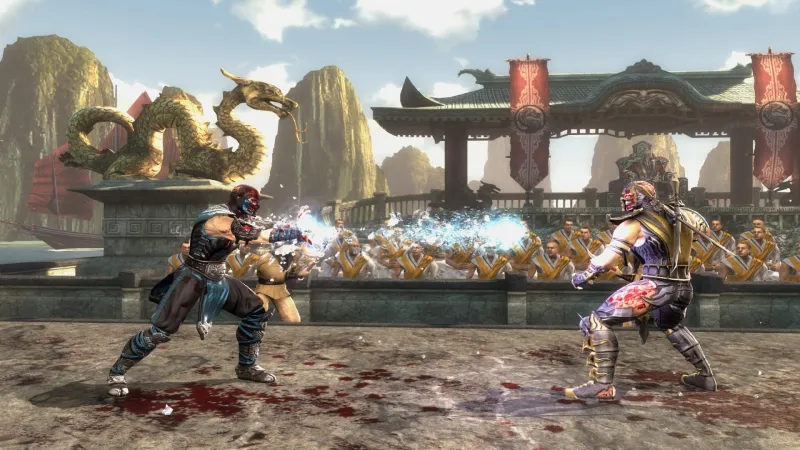
It’s interesting how these two franchises have almost mirrored each other in a poetic fashion at various times in their histories. Do you feel almost like a brethren with the Street Fighter franchise?
A competitive brethren, I guess. There were the inevitable comparisons with Mortal Kombat and Street Fighter. And Tekken is really taking a huge bite of that pie as well, too. I think those are probably the three big fighting game franchises, but I’ve always really liked playing Street Fighter II. That was a big part of it. I thought Street Fighter IV was one of the best ones in the whole series. With Ultra Street Fighter IV, they really honed it down with several releases and all that. I was a big fan – and still am – of it.
Ultra Street Fighter IV is probably my favorite Street Fighter game, which surprises a lot of people when I tell them that.
Yeah, a lot of people go Super Turbo from the arcades and stuff, but Ultra was great!
And Street Fighter has always had a lot of crossovers. Mortal Kombat, as we discussed earlier, has had some crossovers. You’ve mentioned sometimes on social media that you’ve worked in the past to get a Street Fighter/Mortal Kombat crossover game to happen. Can you elaborate on why that’s never happened?
I think it was the violence. I’m guessing it was that, but I never had a conversation with somebody at Capcom where they said it. It was always our people will call them, and then I’ll hear something back, and it usually is dead in the water at that point.
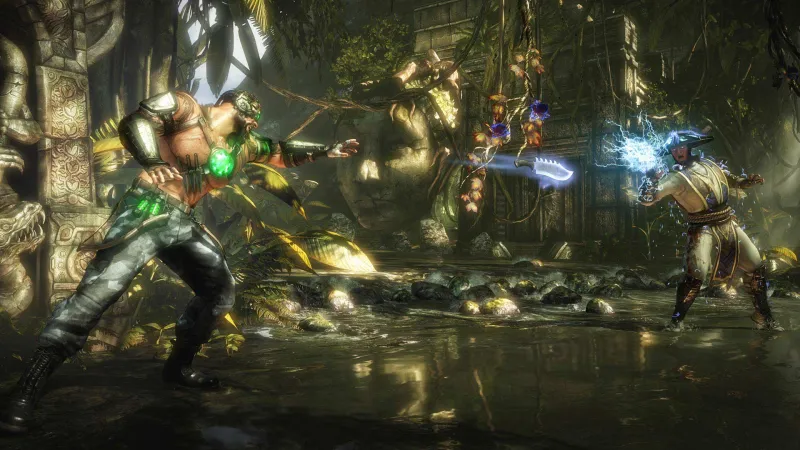
I know Smash Bros. has kind of blown down the door of what it means to be a crossover fighting game, but I feel like that would be the biggest crossover fighting game announcement since Smash.
Yeah. Yeah. I can think of a couple other ones, but I probably shouldn’t say it or somebody’s gonna assume we’re doing it. [Laughs]
People do like to read between the lines with you, don’t they?
Yeah. [Laughs]
One of the theories people love to kick around is the idea that you’re making a Marvel fighting game. Are you?
Are we making a Marvel fighting game? […] No.
When you rebooted Mortal Kombat as the 2D fighting franchise with MK9, what was it like going back to that style and re-embracing what it meant to be a rock-solid 2D fighter and then carrying that DNA through three Mortal Kombat games and two Injustice games?
It was kind of like coming home from college or something like that. You start using different muscles that you haven’t used in a long time. “Oh, that’s right! We’re a 2D game, and this is the strategy, and this is the navigation and the movement around the arena.” Again, what I was so excited about was that it was such a big departure from the previous game.
Like, a lot of what our strategy is, is we’re not afraid to make a big change to a new Mortal Kombat. Even if the last game was huge. Like, MK11 is our biggest Mortal Kombat game, and when we do another Mortal Kombat game, it’s not going to be just a duplicate of MK11 with prettier graphics; we’re going to shake the cage. We’re going to change things up. We’re going to answer the question that people [have] like, “Why should I care about this one?” “Well, you know, what’s different about this one…” and then we’ll give them a big answer.
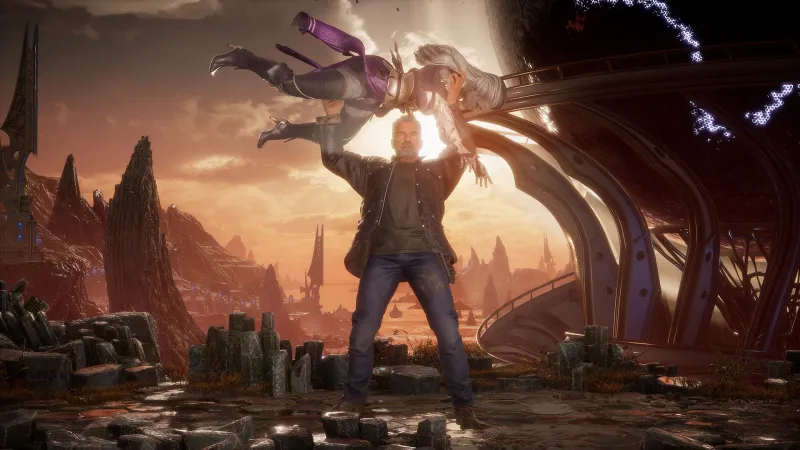
Something you’ve done with recent Mortal Kombat games, as well as with the Injustice titles, is have a lot of guest characters. With the MK games, they’ve been themed in the roster they include, like one has horror movie characters, and one has ’80s action movie characters. What is the process like for reaching out to those companies and licensing those characters? How often do these companies have concerns about their characters getting their heads cut off or their hearts ripped out?
You know, we’ve had plenty of polite “no thank you”s because we’ll send them a video of our Fatalties and go, “Oh, by the way, this is what’s going to happen to your characters.” Some of them just go “nope,” and then that’s the end of the discussion. But usually, when it’s something like Freddy Krueger or Jason or Texas Chainsaw Massacre, they’re like, “Yeah, we’ve done that before, so no big deal.” And that’s why we’ve seen a lot of horror movies, or Alien, RoboCop, Terminator, Rambo, all of those. And again, it’s like I was saying before, we’re children of the ’80s, and so that’s the kind of stuff we grew up on.
One of the big things these newer games do is the X-ray moves, which allow you to perform these flashy attacks that almost seem like finishing moves, but they’re in a match and just do a lot of damage. Where did this idea come from, and how did you implement it in a way that felt balanced within the gameplay?
It was actually a number of movies, and even there was a game called Blitz: The League that Midway had done, and they had these moves that were similar to these X-ray moves, where you go inside the body, and it would break, and it was very visceral. So, it was inspired by a number of other games or something we’d see in the movies. It was kind of like the Mortal Kombat version of that, where you actually see the bone breaking. You know, it took a decent amount of time for us to choreograph the feel of that and develop the tech for all that, and it turned out great. I mean, to this day, we’re showing the insides of your opponents just to keep things really visceral.
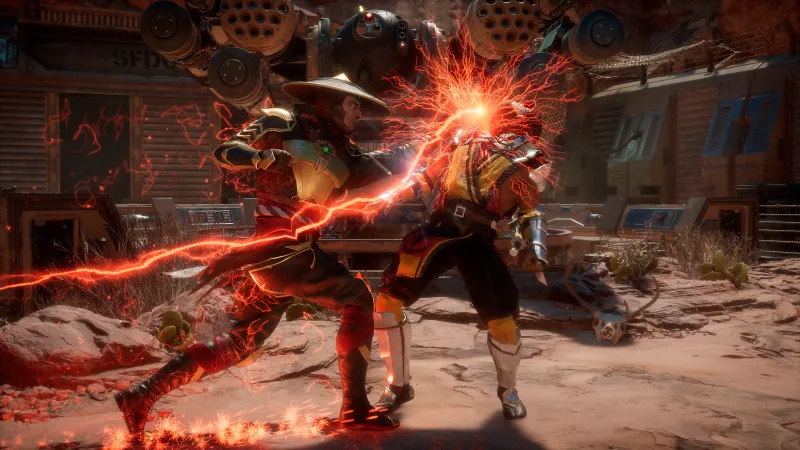
It has been a while since we’ve gotten some big news on the Mortal Kombat front. Are you able to tease more about when fans can expect to hear more about the future of the series?
I wish. I wish I could. I’ll tell you what: On Twitter, I’ll make a comment that has nothing to do with Mortal Kombat, and 75 percent of the responses are, “When’s Mortal Kombat 12? When’s Injustice 3?” “What’s our next game,” basically. As much as I’d love to reveal what we’re planning, I think part of the fun is our campaign. When we first launch the tease, then we show an announce video, then we show gameplay. Players love that, and I think if we just blurted out verbally, it would just kind of ruin the party. It’s like somebody revealing that there’s a surprise party on Friday at 7 o’clock at this person’s house. Then it’s not a surprise anymore.
We last received a new Mortal Kombat game in the form of Mortal Kombat 11 in 2019. In 2020, that game received a major expansion called Aftermath, which added new stages, characters, and a second story.




